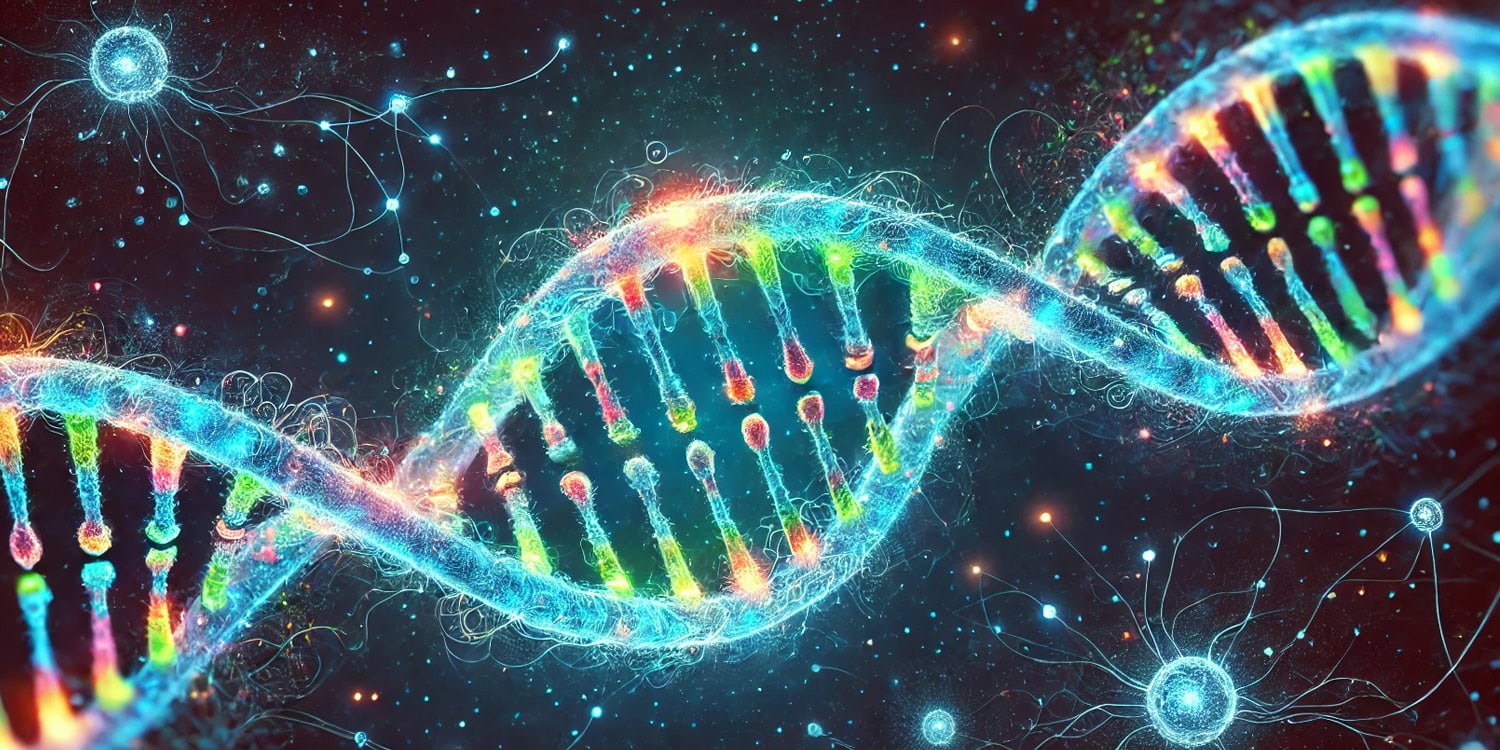A recent study published in Frontiers in Neuroscience has shed light on the genetic factors associated with misophonia, a condition in which certain sounds—such as chewing or breathing—provoke intense emotional reactions like anger, anxiety, or disgust. The researchers found that misophonia shares significant genetic overlap with psychiatric disorders, particularly anxiety and post-traumatic stress disorder (PTSD).
Misophonia, although increasingly recognized, remains poorly understood in terms of its causes and underlying mechanisms. The condition is often classified either as a psychiatric disorder or a broader medical disorder, but consensus on its classification has been elusive.
While misophonia can significantly disrupt everyday life, leading some individuals to seek professional help, the biological and genetic basis of the disorder has not been thoroughly explored. The researchers aimed to fill this knowledge gap by investigating the genetic origins of misophonia.
“As a researcher, when you explain what it is your working on — misophonia in this case — some get giggly. But I was very surprised to learn that very many would say, ‘Oh, I know someone with that,’ or even, ‘Oh, but that’s me,’” said study author Dirk J. A. Smit, an assistant professor of psychiatric neuroscience and genetics at the Amsterdam University Medical Center.
“And they weren’t giggling—they acknowledged it as a real problem that can disrupt lives. In some cases, it leads to family members not eating together, or people avoiding colleagues around lunchtime, after work drinks, or other social events. Most didn’t even know the word ‘misophonia,’ so it is a highly underreported phenomenon.”
To conduct this research, the scientists used a genetic analysis method known as a Genome-Wide Association Study (GWAS). A GWAS examines the entire genome of a large group of people to identify genetic variations linked to specific traits or disorders. In this case, the researchers analyzed genetic data related to a misophonia-like symptom: feeling intense rage triggered by the sound of chewing. The researchers used data from various sources, including 23andMe, the UK Biobank, and the Psychiatric Genomics Consortium.
The sample included 80,607 individuals who self-reported whether or not they experienced this rage response. While this proxy does not encompass all aspects of misophonia, it provided a useful starting point for the genetic analysis.
In addition to analyzing the genetic data related to this misophonia symptom, the researchers also examined the genetic correlations between this symptom and 44 other traits or disorders. The research team categorized the 44 traits into several groups: psychiatric disorders (such as depression and anxiety), audiological conditions (like tinnitus), personality traits (such as neuroticism), and other factors like educational attainment.
The genetic analysis confirmed that misophonia has a genetic basis. A particular genetic locus (rs2937573) was identified as being strongly associated with feeling intense rage triggered by the sound of chewing. This locus is located near the TENM2 gene, which is involved in brain development and cell adhesion. Although the specific role of this gene in hearing or emotional responses to sounds is not yet fully understood, it is a promising area for future research.
One of the key discoveries was the strong genetic correlation between misophonia and psychiatric disorders, particularly anxiety and post-traumatic stress disorder. Misophonia showed a significant genetic overlap with major depressive disorder as well. These findings suggest that misophonia may share underlying genetic factors with these psychiatric conditions, supporting the idea that misophonia could be classified as a psychiatric disorder.
In terms of personality traits, the study found that individuals with a genetic predisposition to misophonia were also more likely to have traits such as neuroticism, guilt, irritability, and worry. These traits are often associated with internalizing emotional responses, which aligns with previous observations that misophonia sufferers tend to internalize their distress rather than expressing it outwardly.
“Most of the results are not really a surprise,” Smit told PsyPost. “Misophonia in its most common form raises anger to eating sounds, although many more emotions and trigger sound combinations exist. In line with this, we found that misophonia genetics was related to the genetics of the personality trait ‘irritability,’ which is kind of the essence of misophonia: you get irritated and angry when you hear the trigger sound, which might then be followed by avoidance behaviors, feelings of guilt, and more.”
“There was also an overlap with PTSD genetics. This means that genes that give a sensitivity to PTSD also increase the likelihood for misophonia, and that could point to a shared neurobiological system that affects both. And that could suggest that treatment techniques used for PTSD could also be used for misophonia.”
Interestingly, the study also found a moderate genetic correlation between misophonia and tinnitus, a condition characterized by persistent ringing or buzzing in the ears. This suggests that while misophonia may not be directly related to hearing loss or auditory dysfunction, they could share some psychological or neural mechanisms.
“There was also a correlation with the risk for tinnitus,” Smit explained. “What drives this link is not clear, but tinnitus almost always has a clear cause in hearing loss of some kind, which may be due to loud music exposure, ototoxic medication, infection, or aging. But it is also well-known that psychological factors play a role in the level of experienced disturbance, so this might be the link.”
However, no significant correlations were found between misophonia and other audiological traits, such as hearing performance or hearing loss, further supporting the idea that misophonia is more closely related to psychological factors than to hearing problems.
Perhaps the most unexpected result of the study was the negative genetic correlation between misophonia and autism spectrum disorder. This means that individuals genetically predisposed to misophonia are less likely to have genetic traits associated with autism. This finding contrasts with earlier clinical observations that suggested some overlap between the two conditions. “There was a small but negative correlation between misophonia genetics and autism genetics,” Smit said. “Given that autism is often associated with sensory sensitivity problems, that was unexpected. I expected a positive correlation.”
The study provides important insights into the genetic factors underlying misophonia and its genetic approach allows for a clearer identification of underlying biological pathways, reducing the risk of spurious correlations caused by external variables such as cultural or socioeconomic factors. Furthermore, by using data from large-scale sources like the UK Biobank and 23andMe, the researchers were able to access an enormous amount of genetic data. This scale is a major advantage because it allows for the analysis of numerous traits and disorders simultaneously.
But as with all research, there are some limitations to consider. One of the main drawbacks is that the research focuses on genetic propensities within the general population rather than on individuals who have been clinically diagnosed with misophonia. While the use of genetic data provides insight into tendencies and risks, it does not directly examine the disorder itself in diagnosed individuals.
“Our study was based on a sample from 23andMe, where participants answered a few simple questions about misophonia and the taste of cilantro,” Smit explained. “While this led to very interesting results, it did not involve a validated questionnaire or a medical assessment with a structured interview. So the results will be affected somewhat by reporting biases.”
It is also important to note that genetic correlations reflect shared genetic risk factors but do not necessarily indicate direct causal relationships between traits. As such, while the study found significant correlations between misophonia and conditions like anxiety and post-traumatic stress disorder, it cannot definitively determine whether these disorders share the same causal pathways or whether they simply overlap in some genetic risk factors.
Looking forward, the researchers suggest that future studies should investigate whether different emotional responses to misophonia trigger sounds (such as anxiety or panic rather than rage) are associated with different genetic profiles. This could help clarify whether misophonia is a uniform disorder or if there are distinct subtypes based on the primary emotional reaction to trigger sounds.
In addition to exploring potential subtypes, the team is also focusing on how misophonia manifests in specific populations, such as individuals with autism.
“We are continuing with a report on misophonia in autism, an understudied phenomenon in this group, although they have been studied for other hearing sensitivity symptoms like hyperacusis and phonophobia; sensory sensitivity is a well known symptom in many autistic individuals,” Smit explained. “This study on the prevalence of misophonia in autism is important because many people with autism indicate that they have misophonia symptoms, but some treatment options, like group cognitive-behavioral therapy, may not be as appropriate for them.”
The study, “A genome-wide association study of a rage-related misophonia symptom and the genetic link with audiological traits, psychiatric disorders, and personality,” was authored by Dirk J. A. Smit, Melissa Bakker, Abdel Abdellaoui, Alexander E. Hoetink, Nienke Vulink, and Damiaan Denys.




